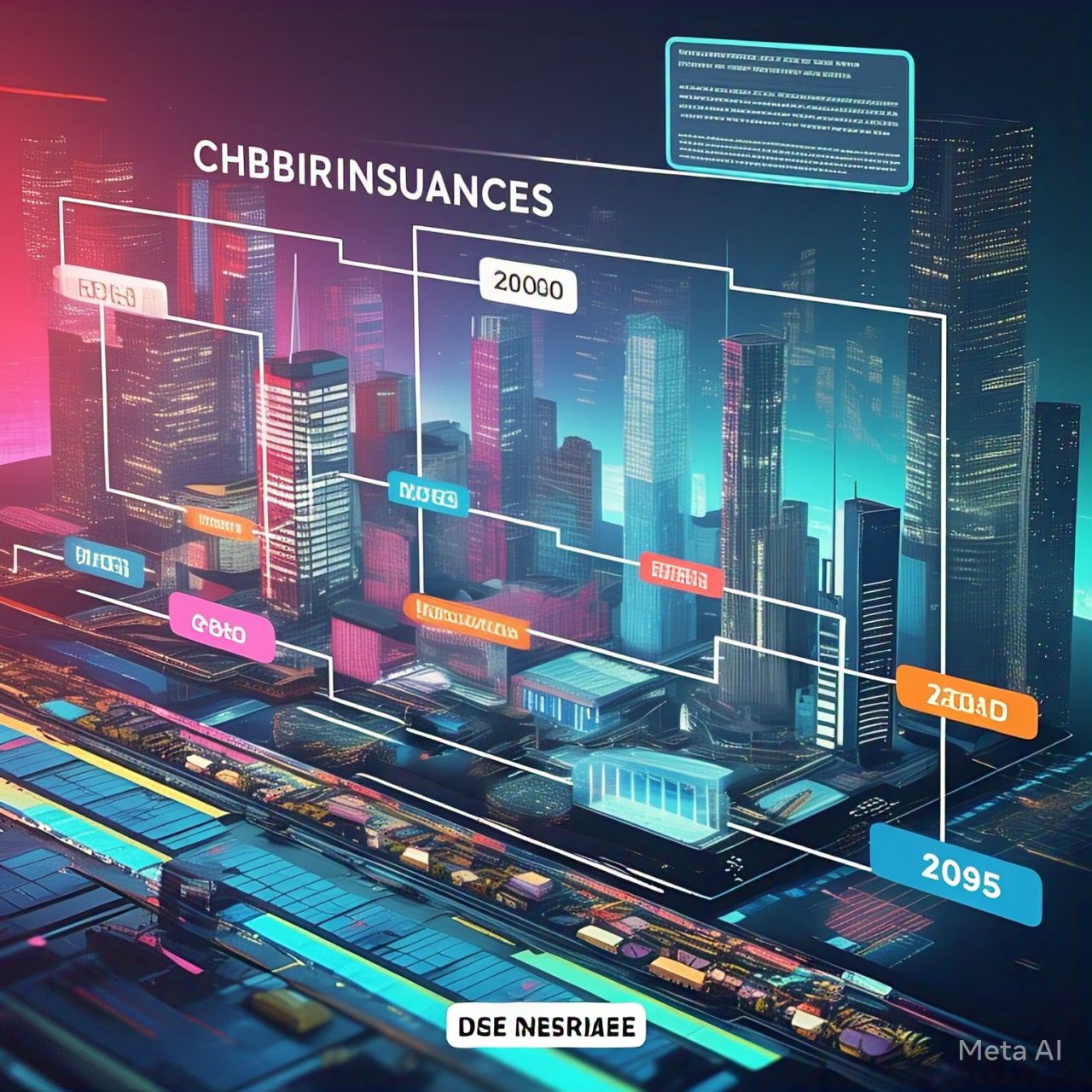In today’s interconnected world, cyber threats have become one of the most significant risks facing businesses, governments, and individuals. With increasing reliance on digital infrastructure, companies are more vulnerable than ever to cyberattacks, data breaches, ransomware, and other online threats. As a result, the cyber insurance industry has grown rapidly to help organizations mitigate financial losses and manage risks associated with cyber incidents.
Cyber insurance, once considered a niche market, has evolved into a critical component of risk management for businesses of all sizes. However, the landscape of cyber insurance continues to shift, driven by technological advancements, evolving cyber threats, and changing regulatory environments.
In this article, we will explore the history, growth, challenges, and future of cyber insurance, as well as the role it plays in today’s cybersecurity strategies.
The Origins of Cyber Insurance
Early Days: The Rise of Digital Risks (1990s – Early 2000s)
The concept of cyber insurance emerged in the 1990s, as businesses started relying on computer networks and the internet for operations. At that time, traditional insurance policies, such as general liability and property insurance, did not cover digital risks like hacking, data breaches, or system failures.
The first cyber insurance policies were introduced in the late 1990s, primarily covering data loss, business interruption, and software failures. However, demand remained low, as businesses were not fully aware of cyber risks, and many believed their existing IT security measures were sufficient.
Early 2000s: The Dot-Com Boom and Initial Cyber Threats
The early 2000s saw rapid growth in e-commerce, online banking, and cloud computing, increasing businesses’ exposure to cyber risks. Major cyber incidents, such as the Love Bug Virus (2000) and the Slammer Worm (2003), raised awareness of cybersecurity vulnerabilities.
During this period, insurers began expanding cyber coverage to include:
✔ Data breaches and theft
✔ Network security failures
✔ Third-party liabilities related to cyber incidents
However, cyber insurance policies were still highly customized, with limited standardization across the industry.
The Growth of Cyber Insurance (2010s – Present)
1. Increasing Cyber Threats Drive Demand
The 2010s witnessed an explosion of cyberattacks, with high-profile breaches affecting major corporations. Some of the most significant incidents included:
🔹 Sony PlayStation Network Breach (2011) – Exposed 77 million user accounts.
🔹 Target Data Breach (2013) – Compromised 40 million credit card numbers.
🔹 Yahoo Data Breach (2013-2014) – Affected 3 billion user accounts.
🔹 WannaCry Ransomware Attack (2017) – Impacted organizations worldwide, including hospitals and government agencies.
As a result, businesses recognized the financial and reputational risks of cyber incidents, leading to increased demand for cyber insurance. Insurers responded by expanding coverage to include:
✔ Ransomware payments and extortion costs
✔ Incident response services (forensic investigations, legal assistance, PR management)
✔ Regulatory compliance and fines
✔ Business interruption due to cyberattacks
2. The Role of Regulations in Cyber Insurance Growth
Governments worldwide introduced data protection regulations, requiring companies to improve cybersecurity and take responsibility for data breaches. Key regulations that influenced cyber insurance adoption include:
🔹 General Data Protection Regulation (GDPR) – 2018 (EU): Companies must report data breaches within 72 hours or face heavy fines.
🔹 California Consumer Privacy Act (CCPA) – 2020 (USA): Gives consumers more control over personal data.
🔹 New York Cybersecurity Regulation – 2017 (USA): Requires financial institutions to have cybersecurity programs.
These laws increased corporate liability and penalties for data breaches, making cyber insurance an essential part of risk management.
3. Cyber Insurance Becomes Mainstream
By 2020, cyber insurance had become a mainstream product, with companies across industries purchasing policies. Insurers introduced more standardized policies, making cyber insurance more accessible to small and medium-sized enterprises (SMEs).
Additionally, the COVID-19 pandemic (2020-2021) accelerated digital transformation and remote work, increasing cyber risks such as:
✔ Phishing and social engineering attacks
✔ Cloud security vulnerabilities
✔ Remote access breaches
The pandemic led to a surge in cyber insurance policies as companies sought protection against ransomware and business email compromise (BEC) attacks.
Challenges in the Cyber Insurance Industry
1. Rising Premiums and Coverage Limitations
With the increase in cyberattacks, insurers have raised premiums and imposed stricter underwriting standards. According to industry reports, cyber insurance premiums doubled between 2020 and 2023 due to the high number of claims.
Additionally, some insurers have reduced coverage for ransomware payments or implemented higher deductibles, making it harder for businesses to obtain affordable policies.
2. Difficulty in Risk Assessment
Unlike traditional insurance (such as auto or property insurance), cyber risks are difficult to predict and quantify due to:
✔ Rapidly evolving attack methods
✔ Lack of historical data for new threats
✔ Human error contributing to breaches
Insurers use AI and machine learning to analyze cyber risks, but accurately pricing policies remains a challenge.
3. Regulatory and Legal Uncertainty
Different countries have varying cybersecurity and data protection laws, making it complex for insurers to offer standardized policies globally. Additionally, some governments discourage ransomware payments, complicating policy coverage for cyber extortion.
The Future of Cyber Insurance
The cyber insurance industry is expected to continue evolving, with new innovations shaping the market.
1. AI-Powered Risk Assessments
Insurance companies are using AI-driven analytics to assess cybersecurity risks more accurately. By analyzing:
✔ Real-time threat intelligence
✔ Network vulnerabilities
✔ Employee security behaviors
Insurers can offer dynamic pricing models based on a company’s cyber hygiene.
2. More Stringent Cybersecurity Requirements
Businesses may need to meet minimum security standards (e.g., multi-factor authentication, regular security audits) to qualify for cyber insurance coverage.
3. Growth of Parametric Insurance for Cyber Risks
Parametric insurance provides automatic payouts based on predefined cyber event triggers, reducing claim disputes and delays.
4. Expansion into Small and Medium-Sized Enterprises (SMEs)
Cyber insurance adoption among SMEs is expected to grow, as insurers develop affordable, simplified policies tailored to small businesses.
5. Cyber Insurance and the Metaverse
As businesses expand into the metaverse and digital assets (e.g., NFTs, cryptocurrencies), insurers will introduce new policies covering virtual identity theft, digital asset loss, and metaverse-related fraud.
Conclusion
Cyber insurance has evolved from a niche offering to a critical necessity for businesses in today’s digital economy. With cyber threats becoming more frequent and severe, companies must integrate cyber insurance into their overall risk management strategies.
However, as cyber risks continue to evolve, insurers must adapt by enhancing risk assessments, leveraging AI-driven solutions, and offering more dynamic coverage models. The future of cyber insurance will be shaped by technological advancements, regulatory changes, and the growing importance of cybersecurity resilience.
For businesses, cyber insurance alone is not enough—a proactive approach to cybersecurity, employee training, and compliance is essential to minimize risks in the digital age.
Final Thought:
As cyber threats evolve, cyber insurance is no longer optional—it’s a necessity for businesses looking to protect their financial stability and reputation in an increasingly digital world.















